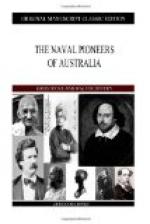This is a very fair summary of his work, and in his dedication of his book to the Earl of Pembroke he says truly enough:—
“The world is apt to judge of everything by its success; and whoever has ill-fortune will hardly be allowed a good name. This, my lord, was my unhappiness in my late expedition in the Roebuck, which foundered through perfect age near the island of Ascension. I suffered extremely in my reputation by that misfortune, though I comfort myself with the thoughts that my enemies could not charge any neglect upon me.”
Upon his return from the Roebuck voyage his next exploit was the command of a privateering expedition consisting of the St. George and the Cinque Ports, equipped by a company to cruise [Sidenote: 1715] against the Spaniards in the South Seas. He sailed upon this voyage in April, 1703, first having the honour of a presentation by the Lord High Admiral to the new Queen (Anne). It is well known that the voyage was a failure, and how Dampier, in command of the St. George, quarrelled with Funnel, in command of the Cinque Ports. After this voyage he began his downward career, and the next heard of him is when he sailed as pilot on the well-known Woodes Rogers expedition, returning in 1711 a very small sharer in booty to the value of about L150,000.
It was on this voyage that Alexander Selkirk was found upon Juan Fernandez, and Woodes Rogers learned from his pilot, Captain Dampier, how the man had been left upon the island more than four years before from the Cinque Ports, and that Selkirk was the best man in her, and so Rogers took him on board his ship.
This, so far as written story goes, is the last of Dampier, and nothing is known of how he spent his declining days. The discovery of his will proves that he died in Coleman Street, St. Stephen’s, London, some time in 1715. The will does not mention the value of his property, but he could not have died rich, and was probably not only poor, but, to judge by the fact of his death not having been recorded by his contemporaries, must have been almost, so far as the great folks who once patronized him were concerned, friendless.
CHAPTER III. [Sidenote: 1755]
CAPTAIN COOK, THE DISCOVERER.




